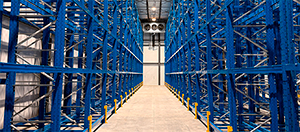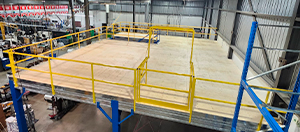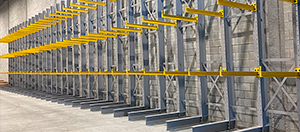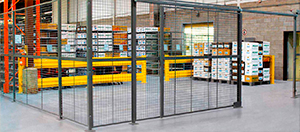Pallet racking is an essential part of many warehouses and storage facilities, providing an efficient solution for organizing and storing palletized goods. However, when dealing with hazardous products, the use of pallet racks requires special attention to ensure safety and regulatory compliance.
Key points to consider:

- Material compatibility: Ensure that the pallet rack construction materials are compatible with hazardous products stored. Some chemicals may corrode or damage certain types of materials, which could compromise the safety of the entire structure.
- Load capacity: Check the load capacity of the pallet racking carefully to ensure that they can support the weight of the hazardous products stored. Exceeding the load capacity can cause collapses and serious accidents.
- Stability and anchoring: Pallet racking must be stable and properly anchored to prevent any tipping or movement. This is particularly important in seismic areas or areas where there is a risk of shock or vibration.
- Spill protection: Consider installing containment containers or containment platforms on the pallets to collect any spills of hazardous products. This prevents soil contamination and facilitates cleaning in the event of an incident.
- Signaling and identification: Ensure that carriers containing hazardous products are clearly marked and identified. Use labels that comply with current standards to indicate the type of product, associated risks and precautions.
- Access and handling: Facilitate access to hazardous products stored on pallets for safe and efficient handling. Provide sufficient space between aisles to allow forklift trucks and other handling equipment to move around.
- Inspection and maintenance: Perform regular inspections of the pallet racks for any signs of damage or corrosion. Ensure that necessary repairs are completed quickly to maintain facility safety and compliance.
Regulations and standards:
Compliance with existing regulations and standards for the storage of hazardous products, including specific requirements for the use of pallet containers, is essential. Consult the competent authorities and standards organizations for detailed information on the requirements applicable to your situation.Additional tips:
- Training of personnel: Ensure that staff are properly trained in the handling and storage of hazardous products, as well as the use of handling equipment and pallets.
- Emergency plan: Develop a detailed emergency plan for the event of a leak, spill or fire involving hazardous products stored on pallets.
- Collaboration with experts: If in doubt, do not hesitate to consult experts in the field of hazardous product storage and pallet safety for advice and personalized support.
Taking these important considerations into account, you can use pallet racking safely and efficiently for the storage of hazardous products while ensuring regulatory compliance and environmental protection.

_239.png)
_293.png)
_785.png)





_375.png)








